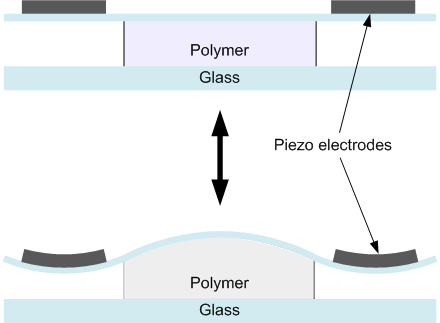Change may be coming to the world of camera autofocus. Traditional smartphone autofocus uses a voice coil to move the lenses and change the focus. While this has obviously worked, a company called poLight thinks it could work better. In particular, faster and smaller.
They’ve fashioned a MEMS autofocus module. By goosing a couple of piezoelectric electrodes on a thin plate of glass, they can warp the glass – and therefore change the surface of a polymer block, turning it into a lens. The amount of actuation determines the curvature and hence the focus.

They claim that, unlike voice coil, this arrangement can withstand reflow solder temperatures, simplifying manufacturing and reducing cost. It also operates faster than a voice coil, improving performance for users.
You can find more on their website.




